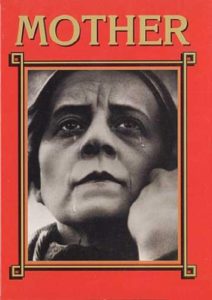HNC Photography, Introduction to Film Culture Blog, Movies watched, Part three - Fact or fiction? Truth or lies?, Project 4 - Believe it or not, Research & Reflection IFC
 Mother (1926)
Mother (1926)
Director: Vsevolod Pudovkin
Synopsis: One woman’s struggle against Tsarist rule during the 1905 Russian Revolution.
Summary: In this film, the mother of Pavel Vlasov is drawn into the revolutionary conflict when her husband and son find themselves on opposite sides during a worker’s strike. After her husband dies during the failed strike, she betrays her son’s ideology in order to try, in vain, to save his life. He is arrested, tried in what amounts to a judicial farce, and sentenced to heavy labor in a prison camp. During his incarceration, his mother aligns herself with him and his ideology and joins the revolutionaries. In the climax of the movie, the mother and hundreds of others march to the prison in order to free the prisoners, who are aware of the plan and have planned their escape. Ultimately, the troops of the Tsar suppress the uprising, killing both mother and son in the final scenes.(Mother (1926 film), 2016)
Review: This film takes us through the struggle of one woman, a mother, through the 1905 Russian revolution. The film is very much a metaphor for the revolution both in its overall narrative and the symbolism used.
AS with many film of it time it was made with the of showing to the Russian people the benfits of he revolution – at the time most of the population was poor and illiterate so cinema was an ideal way for the Government to get across there ideals. The use of a mother love is something that all Russians would relate to.
On the website sensesofcinema.com Cara Deloen suggest that while on the surface the film is a clear propagator of new Soviet Ideal: “The poor peasant mother is ignorant to the issues that reside outside her home. However, through the revolutionary movement, which strives to dissolve the present regime, the mother finds a sense of realisations. This realisation enables her to divest herself of her traditional values, embodied by the home, which is only seen once after her self-discovery, and actively pursue issues within the public sphere”.(Larsson et al., 2006).
However, DeLoen go on to suggest deeper analysis that shows a “dichotomy between traditional and new ideologies” (Larsson et al., 2006), that is in the 1920’s new Soviet society was just developing at the film illustrates that chaos, The film also propagates that the woman will even after the revolution remain many in the home and not as leaders. Over the film could be suggesting that “society that is full of utopian dreams, but has yet to fully achieve them due to the strong constraints of patriarchal traditions”.(Larsson et al., 2006).
